Environmental Quality Lab
Experience and Expertise
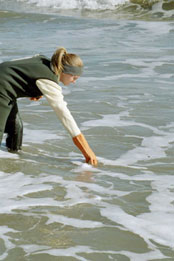 |
|---|
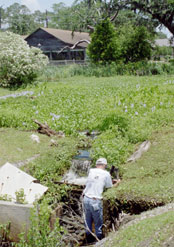 |
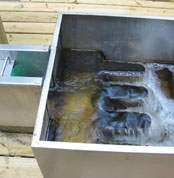 |
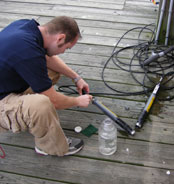 |
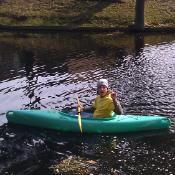 |
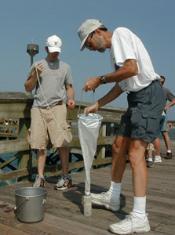 |
Projects involving the EQL illustrate the capabilities and expertise of the laboratory and its staff. Below are brief descriptions of recent projects conducted by the EQL:
1997 to present. Beach water quality monitoring for Surfside Beach, Myrtle Beach, Briarcliffe Acres, North Myrtle Beach, and Horry County, S.C. Periodic sampling and analyses for Enterococci bacteria and dissolved solids. Results used by South Carolina Department of Health and Environmental Control (SC DHEC) for advising the public when swimming may be a health risk because of adverse water quality.
1999 to 2003. Identification and mitigation of non-point source pollution in the Waccamaw River, Kingston Lake Watershed for $317,000 US EPA 319 Program grant awarded through SC DHEC. Periodic sampling and analyses for complete suite of traditional environmental water quality parameters (bacteria, chlorophyll, nutrients, major anions, major cations, dissolved oxygen demands, dissolved solids, suspended solids, color, turbidity, etc.). Also constructed and tested a stormwater treatment best management practice (constructed wetland system). Involved partnering with USGS on river discharge, groundwater wells and flows, and in-situ water quality sensor deployment, maintenance and data management.
2000 to 2002. Source tracing of E. Coli using Multiple Antibiotic Resistance in Kingston Lake Watershed. Funded by SC Sea Grant Consortium.
2001. Fecal coliform analyses for Wetland & Environmental Services, Inc. of Myrtle Beach, S.C.
2002. Investigation of water quality in stormwater runoff ditch and retention pond in Surfside Beach, S.C., for a private citizen. Periodic sampling and analyses for bacteria and dissolved solids.
2003. Investigation of water quality in stormwater runoff ditches and retention ponds in Litchfield, S.C., for a private citizen. Analyses of samples for fecal coliform bacteria, pH, total nitrogen, total phosphorus, turbidity, salinity, and conductivity.
2003. Investigation of water quality in stormwater runoff ditches and retention ponds in Briarcliffe Acres, S.C., for the town administrators. Sampling and analyses for fecal coliform bacteria, pH, dissolved oxygen, chemical oxygen demand, total nitrogen, total phosphorus, chlorophyll, turbidity, salinity and conductivity.
2003 to present. Beach water quality monitoring for Georgetown County, S.C. Analyses of samples for Enterococci bacteria and dissolved solids. Results used by South Carolina Department of Health and Environmental Control (SC DHEC) for advising the public when swimming may be a health risk because of adverse water quality.
2004 to present. Evaluation of performance of offshore stormwater discharge pipes for the City of Myrtle Beach, S.C. Services include experimental design; sampling in swashes, in surf zone, from piers, and from small boats; water flow measurements; and analyses for bacteria and complete suite of traditional environmental water quality parameters.
2004 to 2006. Evaluation (pre and post) of a restoration of tidal marine saltmarsh at Huntington Beach State Park, S.C. Services included experimental design, sampling, and analyses for traditional environmental water quality parameters. Funded by Five-Star restoration grant administered by NOAA through the Friends of Huntington Beach State Park.
2004 to present. Volunteer monitoring in conjunction with NOAA’s Southeastern Plankton Monitoring Network. Staffed by CCU undergraduates and local citizens (Pro bono).
2004 to present. Evaluation of pathogen control technology (electrochemically activated solutions) in stormwater runoff and environmental samples for Integrated Environmental Technologies, Inc., Little River, S.C.
2005 to 2006. Evaluation of stormwater BMPs in Murrells Inlet, S.C. Services included experimental design; sampling in creeks, ponds, and inlet waters; water flow measurements; and analyses for bacteria and traditional environmental water quality parameters. Funded by SC DHEC Office of Ocean and Coastal Resource Management (OCRM) through Murrells Inlet, Special Area Management Plan. Project report is available here: Bennett, J. 2007 Assessment of the Effectiveness of Stormwater BMPs in MI.
2005 to 2006. Enterococci bacteria analyses of water samples for DAK Americas, LLC Cooper River Plant, Moncks Corner, S.C. Analyses, data interpretation, and data reporting to support DAK’s NPDES Permit monitoring requirements.
2005 to 2006. Partnership with PBS&J and HDR, science and engineering firms, to determine the feasibility and cost-effectiveness of utilizing ultra violet (UV) light technology to treat stormwater runoff in the Murrells Inlet watershed. Laboratory services provided included experimental design, sampling, water flow measurements, analyses for bacteria and traditional environmental water quality parameters, and data interpretation and reporting.
2005 to present. Fecal coliform bacteria analyses of brackish waters for Applied Technology & Management, Inc. (ATM) of Charleston, S.C. Analyses, data interpretation, and data reporting are to support ATM’s work at the Grand Dunes Marina in Myrtle Beach, S.C.
2005 to present. An Integrated response to nearshore hypoxia events through Coastal Ocean Observing Systems. Subcontract to maintain in-situ DO meter initially on Springmaid Pier, Myrtle Beach, S.C,. and later with additional DO meters on Apache Pier.
2006 to present. Services to provide nutrient analyses for stormwater ponds in northeastern South Carolina. Chlorophyll a and pheophytin analyses of environmental samples for SC DHEC OCRM.
2006 to present. Identification of Coastal Hypoxia Mechanisms in Inner Shelf waters of Long Bay, S.C. Support for this CCU faculty research project includes sampling, field and laboratory analyses for traditional environmental water quality parameters, water flow measurements, and data interpretation. Funding provided by SC Sea Grant Consortium.
Learn more about the Environmental Quality Lab's experience and see examples of previous work »





